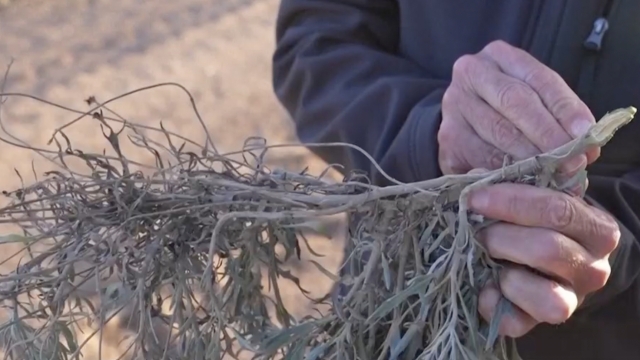The AP says the future of road travel may lay in the American Chapparal and desert. A guayule shrub may be key perhaps to making the tires of tomorrow.
"This plant is a lot more resilient than any other plant that we grow here in Arizona for agriculture. It's got drought tolerance," said David Dierig, manager of the Bridgestone Agro Operation.
"The reason that we're so interested in guayule is because we need a domestic source of natural rubber," said Dierig.
In Eloy, Arizona, about halfway between Phoenix and Tucson, Bridgestone tire company is researching the use of these plants to make tires.
The company says it is spending more than $100 million on the effort, with an aim to commercialize natural rubber from guayule by 2030.
Today, most rubber uses the Hevea tree and processing happens overseas. But persistent drought and disease in Southeast Asia has companies looking for alternatives.
"If we continued to rely on a supply that comes from Southeast Asia, there's all these risks that are just out there," said Dierig.
Bridgestone hopes to entice American farmers to take on the growing of guayule large-scale, saying the plant takes half the water required by crops like cotton or alfalfa.
Ohio State University Professor Katrina Cornish spends her days researching plant alternatives, like using dandelions to make rubber products — and not just for tires, but for things like trachea tubes and medical gloves, too.
"The technical challenges are pretty much all been overcome. So we know how to do this. The challenge is financial," said Cornish.
Some boosters argue that raising low-thirst rubber ingredients here will not only be useful amid climate change, but also insulate the U.S. from political and economic uncertainties in countries where the Havea trees are grown.
And it could help meet demand: The growing number of cars on the planet is expected to top three billion by 2050.
"So we have to have these alternatives to meet the projected demand, even if Hevea doesn't collapse. Now if Hevea collapses, we need them yesterday," said Cornish.
Trending stories at Scrippsnews.com



